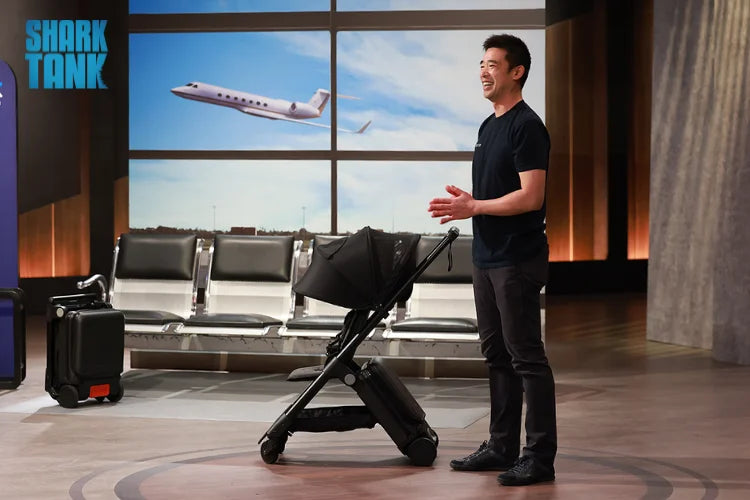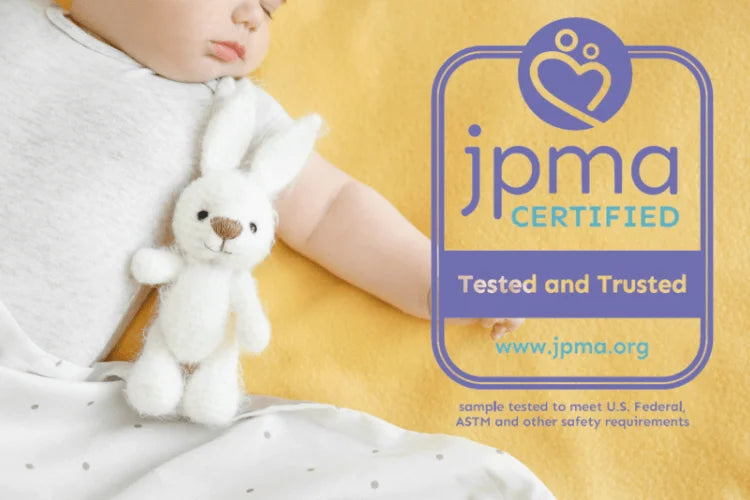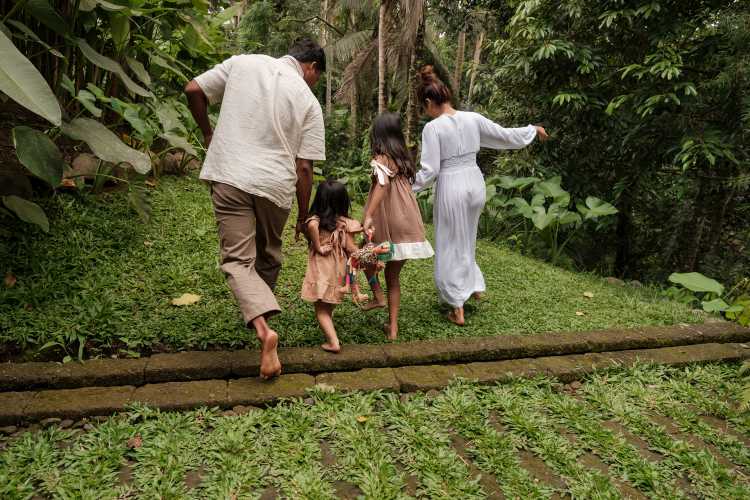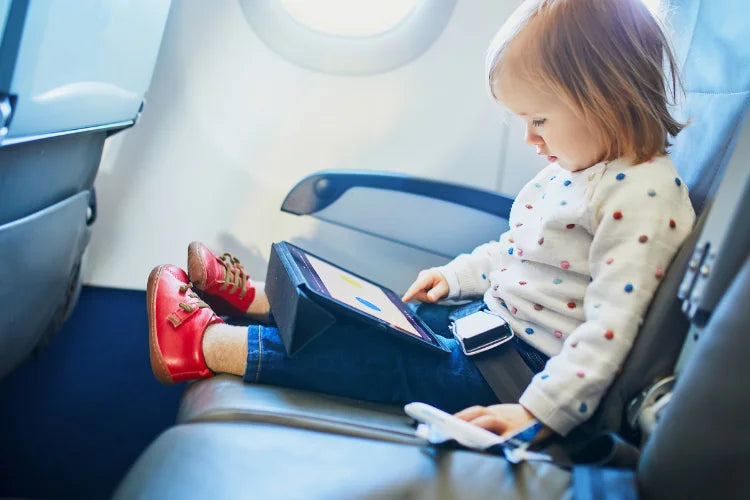Baby carriers come in handy especially when you are out and about. It provides a secure place for your baby and frees your hand for other tasks. Furthermore, using a baby carrier allows you to carry your baby for longer periods of time without straining your arms.
Other than that, research shows that skin to skin or babywearing improves attachment and bonding between parent and baby. For children with autism spectrum disorders, the deep pressure aspect of babywearing could calm children and reduce stimming behaviors. [1]
Babywearing also increases the level of face to face interactions between baby and parent. In fact, evidence of babywearing has shown the ability to physiologically calm a baby. [2]
In this article, we will discuss the different types of carriers as well as explore the most popular baby carriers in the market today.
Choosing the best baby carriers ensures your little ones experience the comfort and security every parent desires. You can also read here to learn about other baby travel essentials that simplify your family travels.
Read here for more information on the best travel diaper bag that is stylish, function and suitable for both mom and dad.
This article may contain affiliate links. Please read more about our terms and conditions here. As an Amazon Associate we earn from qualifying purchases.

Table of Contents
What Age is Appropriate for Baby Carrier?
Baby carriers are one of those essentials for your vacation. Ensure you follow safety tips from the Consumer Product Safety Commission whenever using infant baby carriers.
Newborn - 4 months
Theoretically, you can start carrying your baby from the moment they are born. However, you will have to keep one thing in mind: newborns must be at least 4 months old before they will start developing strong enough neck muscles to support their head when placed in a baby carrier.
Wraps and slings can be an option for babywearing in the early months to properly support their head and upper back.
4 - 7 months
Between 4-7 months, your little one has the ability to support their own head which gives you more options for using a baby carrier.
For younger babies, the ideal position will be facing in position. As your baby develops more head and neck control, you can have them facing out.
7 months+
From 7 months and above, your baby will likely have strong reflexes and control of their head and neck. This is a great time to introduce various carrying positions in order for them to enjoy the surroundings.
They can either be facing out which allows them to enjoy their surroundings or secured on your back in a back carrier.
This is a great time for your little ones to learn and interact while having a walk or going on a hike.

What Kind of Carrier is Best for Baby?
Baby Wraps
This type of baby carrier is made of a long piece of fabric that requires you to tie around your body in order to be able to hold your baby close to your chest.
You may opt for a stretchy wrap that is easier for moms and parents who are still not used to a baby wrap or choose a woven wrap that has the ability to hold your precious one from newborn up to the weight limit indicated by the manufacturer.
Your choices are limitless when you have a baby wrap to accompany you in your child's journey.
Slings
A sling baby carrier comes with a pouch or strip of fabric and two rings that you wrap around your shoulder and wear across your body. The fabric is threaded through the rings to create a buckle effect.
You can carry your little one in various positions when you use a sling baby carrier.
This type of sling can easily be adjusted to different body sizes too.
Structured Baby Carrier
This kind of baby carrier has a pre-built panel with a defined, buckle waistband and arm straps just like a normal backpack that you use. Some brands offer a chest clip that provides additional safety measures to keep your baby carrier properly strapped around your back.
A baby backpack does not require you to tighten fabric from time to time whenever you are using it. All you need to do is buckle up and you are ready to go.
Onbuhimo Carriers
Originating from Japan, Onbuhimo carriers have no waistband, which makes them excellent for quick back carries. They’re best suited for babies who can sit unassisted (around 6 months and up) and are perfect for parents who prefer minimal bulk around the waist, especially during pregnancy.
Meh Dais
Meh Dais (or Mei Tais) are traditional Asian-style carriers that combine the softness of a wrap with the support of a structured carrier. They feature a rectangular body panel with long straps that tie around your waist and shoulders. They’re comfortable, adaptable, and distribute your baby’s weight evenly.
Hybrid
This type of baby carrier offers the comfort of being close to your baby, just like a wrap, but with the ease of using a structured carrier.
Simply put it on like wearing your day-to-day shirt and use the easy-adjust buckles to fasten it properly and adjust it to your comfort.
Can a 1 Year Old Go in a Baby Carrier?
Yes, you can place your one-year-old baby in a baby carrier as long as they are comfortable in the carrier. At this age, your child can be carried in various positions. In fact, many parents choose soft structured baby carriers with padded shoulder straps that can be interchanged between adults.
It is also an age where you can introduce a hip seat for your toddler. A hip seat carrier can be used up to 45 lbs/20.4 kgs or until your child outgrows it.
Which is Better Baby Wrap or Carrier?
This will depend on the age of your baby. Having structured baby carriers with padded straps and waistbands provides more support for parents who are carrying their children. This is especially helpful for older children as they get heavier.
Structured baby carriers can hold more weight than wraps.
On the other hand, if you have a newborn, you may opt for a wrap which provides more sense of security. Their neck muscles and spine are still developing and they require extra support.
What Is the Rule for Baby Carrier?
The “T.I.C.K.S.” babywearing safety rule is a simple guideline to ensure safe and comfortable use:
-
Tight: The carrier should hold your baby snugly against you.
-
In view at all times: You should always be able to see your baby’s face without moving the fabric.
-
Close enough to kiss: Your baby’s head should be close enough for you to kiss easily.
-
Keep chin off the chest: Make sure your baby’s airway remains clear.
-
Supported back: Keep your baby’s back in a natural position with no slumping.
Following these rules ensures both comfort and safety, especially during long travel days.
Is a Baby Carrier Safe for Newborns?
Yes, baby carriers are safe for newborns when used correctly. For infants under 4 months, choose carriers that provide full neck and head support, such as wraps or slings, and make sure your baby’s airways remain unobstructed.
Always follow the manufacturer’s weight and age recommendations, and check for ergonomic positioning — your baby’s knees should be higher than their bottom in an “M” shape to protect healthy hip development.
This webiste uses affiliate links which may earn a commission at no additional cost to you. As an Amazon Associate we earn from qualifying purchases.
10 Baby Carriers to Choose From for Travel

Best Baby Carrier Overall: Ergobaby Omni Breeze Baby Carrier
Pros:
The Ergobaby Omni Breeze baby carrier is easy to clean. You can just pop it in the washing machine and air dry it once it's done. It comes with side pockets for accessible storage and an attachable pouch to stow all your baby essentials when you are traveling with them.
Additionally, it has a hood that can protect your baby against direct sun exposure. It can also serve as a cover for extra privacy when you are breastfeeding.
Cons:
The Ergobaby Omni Breeze baby carrier falls within the mid-price range. It may be a bit bulky to fit in your baby's diaper bag.
Carry Positions:
It offers all carrying positions for parents. The Ergobaby carrier is versatile and you can position your baby in many positions with ease.
Weight Recommendation:
It can hold your baby's weight from 7 lbs up to 45 lbs or 3.2 kgs to 20 kgs.
Carrier Weight:
The product only weighs around 2.29 lbs or 1 kg.

Most Stylish Baby Carrier: Baby Tula Explore Baby Carrier
Pros:
This is one of the soft structured carriers that is made up of breathable cotton material. It is easy to clean and machine washable.
Cons:
According to users, it may not be comfortable for babies when used for longer periods. This carrier requires adjusting from time to time.
Carry Positions:
The Baby Tula Explore Baby Carrier offers multiple positions to carry your little one, including front facing out, facing in, and back carry. Whichever position you choose, it will still provide your baby with a natural, ergonomic position that aids the development of your child's hip and spine.
Weight Recommendation:
It can accommodate the weight of your baby from 7 lbs or 3.2 kgs up to 45 lbs or 20 kgs.
Carrier Weight:
This product weighs around 1.76 lbs or 0.8 kgs.

Best Newborn Carrier for Summer: Konny Baby Carrier
Pros:
The Konny baby carrier is very lightweight and slides over your body like a T shirt. You can keep your newborn clos to you with the Konny baby carrier. Its stretchy material provides optimum comfort for your little ones.
This wrap helps distribute your baby's weight evenly all over your upper body without adding extra pressure.
Cons:
Some users report it is difficult to adjust your baby whilst in the carrier. The baby carrier also has a tight fit. This may not be the best choice for plus size mothers.
Carry Positions:
You can use this baby carrrier for front carrying position.
Weight Recommendation:
Designed for newborns up to 44 lbs or 20 kgs.
Carrier Weight:
It weighs around 0.98 lbs or 0.44 kg.

Best Lightweight Carrier: BabyBjörn Baby Carrier Mini
Pros:
This carrier is made of cotton which makes it breathable. It is safe, comfortable, and easy to use. You can adjust it depending on your liking. The product is also made from sturdy materials that can be used for a long time.
Cons:
It is not easy to wash compared to other carriers on this list. Based on the instructions of the manufacturer, you will have to wash it separately in warm water and air dry it. Some users have reported that this carrier takes longer to dry.
Carry Positions:
It can be used by parents with 2 front-carrying options. It is easy to remove which allows you to seamlessly change the carrying position of your baby.
Weight Recommendation:
This product can hold weight from 7 lbs to 24 lbs or 3.2 kgs to 10.9 kgs.
Carrier Weight:
It weighs 0.5 lb or 0.23 kg.

Best Baby Carrier for Twins: TwinGo Original Baby Carrier
Pros:
The TwinGo Orginal Baby Carrier offers an ergonomic design that supports your baby's developing hips and spine. This is a great option when you have two little ones to carry.
Cons:
This particular carrier will require some time to get adjusted and fit well for you and your baby. Due to the nature of carrying two babies, you may experience muscle soreness.
Carry Positions:
You can use this baby carrier for front and backpack carrying positions.
Weight Recommendation:
It has a weight capacity of 10 lbs to 45 lbs or 4.5 kgs to 20.4 kgs.
Carrier Weight:
The product weighs 2.64 lbs or 1.2 kgs.

Best Ring Sling: Wildbird Linen Ring Sling
Pros:
This can also be used as a sunshade or nursing cover, making it an aesthetically pleasing option for parents. It is made from 100% natural European linen that provides comfort and durability.
Cons:
According to users, the linen may feel stiff the first few times you use the Wildbird Linen Ring Sling.
Carry Positions:
This product offers a front-carrying position, including hip and kangaroo carry positions.
Weight Recommendation:
Recommended for 8 lbs to 35 lbs or 3.6 lbs to 15.9 kgs.
Carrier Weight:
The Wildbird Linen Ring Sling is very lightweight and only weighs around 1 lb or 0.5 kg.

Best Affordable: Infantino 4-in-1 Flip Convertible Carrier
Pros:
The Infantino 4-in-1 Flip Convertible Carrier is free of BPA, lead, and phthalates which can be harmful chemicals for your baby. It has an adjustable seat support and extra-padded shoulder straps.
Cons:
Based on some reviews, you may require to adjust the straps from time to time to ensure the straps stay snug around you.
Carry Positions:
This convertible carrier offers four ways to carry your baby. It can be facing-in (narrow seat), facing-in (wide seat), facing-out, and back carry positions.
Weight Recommendation:
You can carry your baby from 8 lbs to 32 lbs or 3.6 kgs to 14.5 kgs when you use this product.
Carrier Weight:
It only weighs around 1.3 lbs or 0.6 kg.

Best for Hiking: Deuter Kid Comfort Child Carrier and Backpack
Pros:
This product offers a large zippered cargo space under the seat where you can store some of your baby's gear when going out with them. It is also made up of a sturdy aluminum frame for maximum stability.
The best carrier and backpack for you if you love outdoors such as having a long walk and hiking with your child. It has mesh sides that allow air to flow freely.
Cons:
However, it is bulky compared to other carriers mentioned in this article. The sunshade does not fully covers the sides of the baby.
Carry Positions:
The Deuter Kid Comfort Child Carrier and Backpack offer a back carry position. It offers easy carrying whenever you are going on a hike with your child.
Weight Recommendation:
Comfortably carries babies up to 48.5 lbs or 22 kgs.
Carrier Weight:
It weighs around 3.3 lbs or 1.5 kgs.

Best Hip Carrier: Tushbaby Hip Seat Carrier
Pros:
The Tushbaby Hip Seat Carrier reduces back, arm, and wrist strain. It offers lumbar and back support for your baby. It is easy to set up compared to other carriers because no infant insert is necessary.
Cons:
This product is not hands-free and too bulky for some parents.
Carry Positions:
This hip seat carrier has four carry positions. It can be used in face-to-face, side-carrying, and front-facing positions. It can also offer additional support when you are breastfeeding.
Weight Recommendation:
Fits newborns when used as breastfeeding support up to 36 months, and up to 45 lbs or 20.4 kgs.
Carrier Weight:
This product only weighs under 1 lb or under 0.5 kg.

Most Versatile Carrier: Líllébaby Complete 6-in-1 All Seasons
Pros:
As the name mentions, LÍLLÉbaby Complete 6 in 1 can be used in multiple positions. It provides good lumbar support, is easy to use and machine washable.
It also comes with a detachable sun hood for extra protection against sunlight.
Cons:
Some users mentioned that the material feels stiff compared to other baby carriers and can be uncomfortable for the baby if they are wearing shorts. This carrier is not as breathable as they seem.
Carry Positions:
This is the type of baby carrier that offers different kinds of carrying positions. It includes fetal, infant facing inward, older baby facing inward, infant facing outward, back carry positions, and hip carry.
Weight Recommendation:
It has a weight capacity of 7 lbs to 45 lbs or 3.2 kgs to 20.4 kgs.
Carrier Weight:
This product only weighs around 1.1 lbs or 0.5 kgs.
Determine Which Baby Carrier is Right for You
Still unsure what type of carrier is most suitable for your baby? Think about when you would like to start using a carrier. For example, if you do not intend to use a baby carrier in the first 3 months of your baby being born, then a wrap may not be suitable for you.
On the other hand, if you live in a tropical country, a baby carrier that is breathable will be best for you and your baby's comfort. Whether it is a wrap, hybrid carrier, soft structured carrier, or sling, your options are endless, but it all comes down to your needs.
Bookmark this article so you can refer back to it at any time.
In the mean time, you can read our article on the best compact stroller that fits in overhead compartment of a plane.
You can also check this article on carry on size requirements for 86 airlines and this travel stroller that is designed to fit majority carry on size dimensions.
References:
[1] Robyn L. Reynolds-Miller. Potential Therapeutic Benefits of Babywearing. Sage Journals. (2016)
[2] Esposito G et al. Infant Calming Responses During Maternal Carrying in Humans and Mice. Current Biology. (2013)













